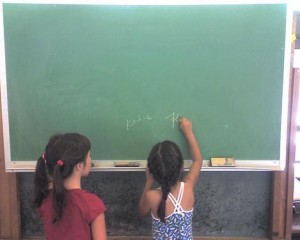More Latino Students Means A Need For Latino Teachers

 A recent article in the Washington Post talks about how the growing Latino population in places that traditionally weren’t known for being ethnically diverse, in this case Maryland, are now experiencing a shortage of teachers who are able to connect culturally with the kids and linguistically with their immigrant parents.
A recent article in the Washington Post talks about how the growing Latino population in places that traditionally weren’t known for being ethnically diverse, in this case Maryland, are now experiencing a shortage of teachers who are able to connect culturally with the kids and linguistically with their immigrant parents.
According to the story:
More than 21 percent of schoolchildren are Hispanic, experts report, compared with 7 percent of teachers. No other racial or ethnic minority group has such a wide disparity. In the struggle to close this gap, the stakes are high: Research suggests that a more diverse faculty might lead to better attendance, fewer suspensions and higher test scores.
As pointed out in an earlier NewsTaco piece about how minorities in college preform better when they have minority professors, having teachers of different backgrounds in elementary and high schools can make a big impact on how Latino kids fare academically later in life. What’s unfortunate is that as a group, Latino youth aren’t doing so great right now in school. As the Washington Post article points out:
The portion of Hispanic students in public schools nationwide doubled from 1989 to 2009, federal data show, and will rise further in coming years. In test scores and graduation rates, Hispanic students trail their non-Hispanic white and Asian peers.
Data has shown that although high school dropout rates for Latinos have declined since the 1980’s, 2009 was at 17.6% according to the National Center for Education Statistics, it’s still a little more than double the national average. While other factors such as income levels and parental involvement definitely weigh in on performance rates, it can’t hurt to think that if K-12 students began their academic careers with positive role models that they could identify with, it would be beneficial to their success not only with that teacher but also later in life.
[Photo By Ryan Ozawa]
